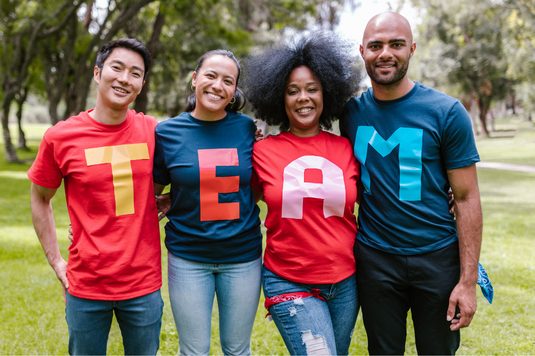

Related Posts
Subscribe to Our Blog
Subscribe to receive email notifications every time we publish new insights, news, and thought leadership to our blog.

The steps that your nonprofit takes to retain volunteers can have a big impact on the value that your volunteer program is driving for your organization. Studies have shown that the average volunteer commits 52 hours a year to volunteerism, and each hour is worth over $30. Based on this data, losing just one volunteer could result in a loss of over $1500 in value annually. How many volunteers is your organization losing each year? What steps is your nonprofit taking to combat this loss and retain value?
If your organization is unsure where to start or is looking for additional ways to retain more volunteers, here are 5 strategies.
According to a study, 36% of people stop participating in an opportunity because the work is not challenging enough for them. Is your nonprofit providing volunteers with interesting and challenging opportunities to fulfill? Do volunteers feel as though their contributions matter to the overall success of your organization? Creating challenging opportunities for volunteers does not mean that you have to make simplistic tasks complicated. You can, however, consider providing volunteers with opportunities for advancement and growth within your organization.
For instance, do you have a volunteer who has been in the same position for an extended period? Have you thought about giving that volunteer the opportunity to train others on how to perform that task more effectively? Have you sought that volunteer’s insights on how the role could be enhanced or how responsibilities could be streamlined? By making minor adjustments to your process, incorporating volunteer feedback, and creating continuous value, you can help supporters feel that your nonprofit is both challenging them and valuing their contributions to the greater good.
In another recent blog post, we talked about the amount of free time the average person has access to. According to our research, the average person has 4 hours of free time available per day, or 28 hours per week. Is your nonprofit considering your volunteer’s schedule when creating opportunities for involvement? Does your organization offer micro-opportunities or remote opportunities that would better fit into the schedule of your supporters?
Being flexible, regarding scheduling, can help you retain more volunteers. One of the best ways to gain insights into the availability of your volunteers is by asking them. This may seem like a basic concept, but you would be surprised how many nonprofits forgo capturing this data as part of their onboarding process. Think about the trends you would be able to capture and leverage just by asking volunteers what time works best for them to give.
Another tip is to make the volunteer registration process as streamlined as possible for supporters. A streamlined process will demonstrate to volunteers that your organization values their time.
One of the best ways to build trust with volunteers is through effective communication. Your organization should use communication as a tool to build and strengthen relationships. Your nonprofit can communicate opportunities for involvement, data about your program’s impact, and thank volunteers personally for their participation. Communication should be frequent and across multiple mediums such as email, text, social media, and in-person. Find out what technologies your volunteers use and be present there. According to a communication study, performed by Willis Towers Watson, organizations with highly effective communication strategies are 3–5 times more likely to outperform their peers. How is your nonprofit going to use communication to retain volunteers in 2024?
As mentioned earlier in this post, being flexible is key, and so is getting volunteers as involved as possible. Studies have shown a direct correlation between retention and the number of hours a volunteer provides an organization each year. According to a study, performed by the Corporation for National & Community Service, volunteers who serve 50 hours per year or more are 40% more likely to give one year to the next than those who serve 1–14 hours per year. The best way to entice volunteers is by creating a personalized, flexible, and engaging team atmosphere. How your organization accomplishes this task is up to you.
Here is a guide on how to engage volunteers that may help!
Helping volunteers gain new skills is a great way to provide them with value in exchange for their time. Is your nonprofit teaching volunteer constituents skills that they can use outside of volunteerism? How is your organization promoting skill development within your network of volunteers?
The key to retaining volunteers lies in a blend of strategies. Your nonprofit should offer volunteers engaging and adaptable opportunities, maintain clear and effective communication, encourage greater involvement, and provide incentives for their time. By building a volunteer program founded on trust and engagement, your organization can ensure that volunteers are eager to return.
Subscribe to receive email notifications every time we publish new insights, news, and thought leadership to our blog.